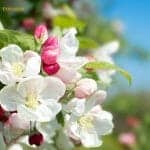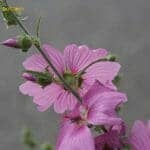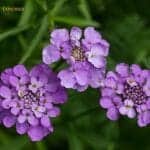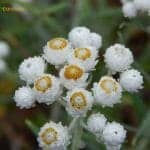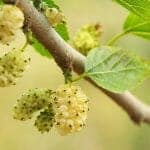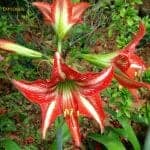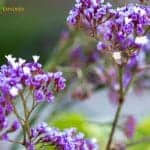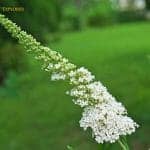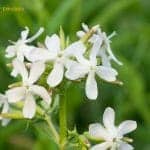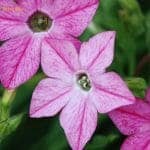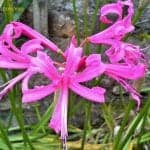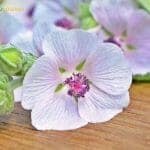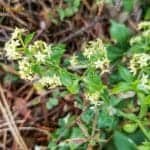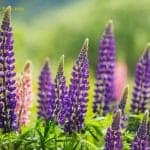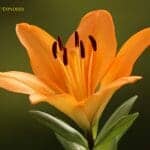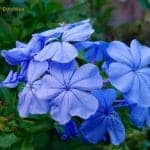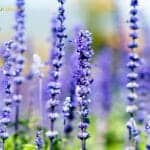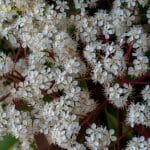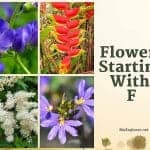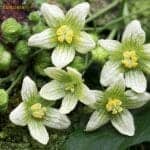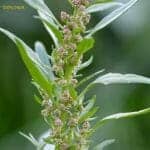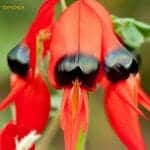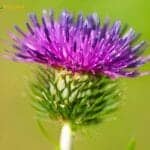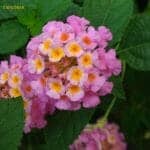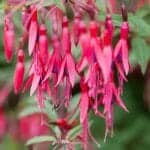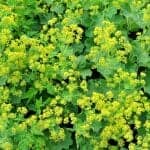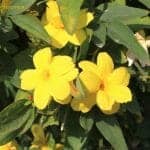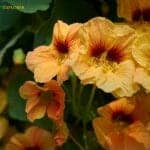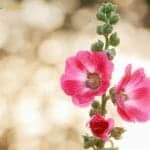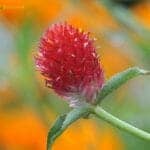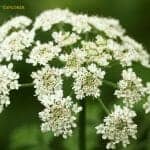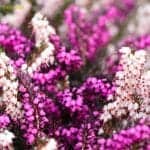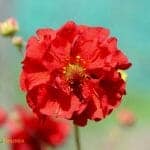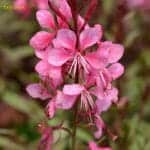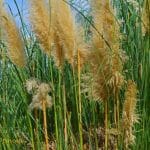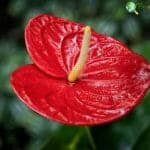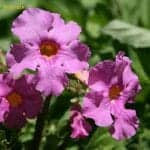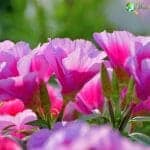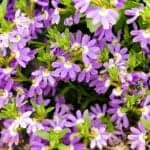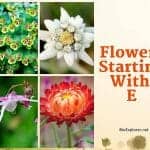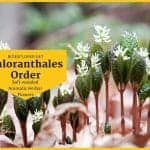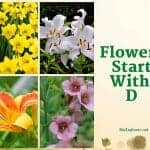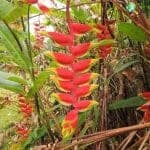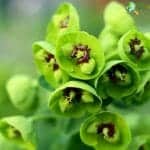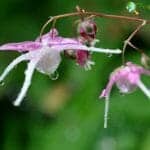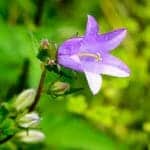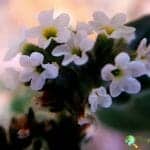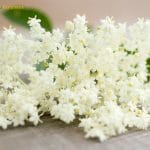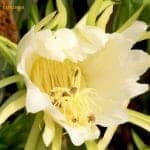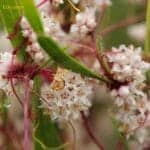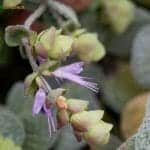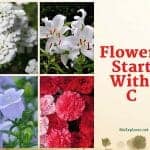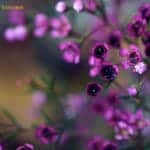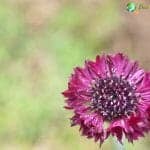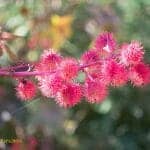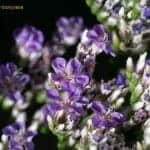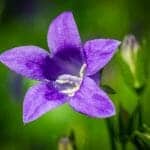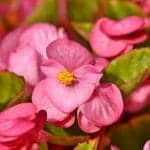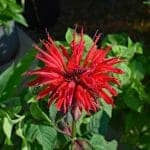types - search results
If you're not happy with the results, please do another search
Apple Blossom
For many nature lovers, apple blossoms (Malus coronaria) are the highlight of the year. This wild beauty with a captivating scent is found in Arkansas and Michigan. Apple blossoms have white and cherry-pink petals. The apple tree flowers are large; they grow with the leaves and are borne in sub-bellied umbels.
Pink Musk
Malva moschata, the pink musk mallow, is a plant species in the Malvaceae family native to Southwest Asia and Europe. This pink wildflower is grown for its fragrant flowers that thrive during the summer months. The pink-musk flowers are in clusters in the axils of the leaves, each flower 3.2 to 5 cm in diameter, with 5 bright pink petals at the notched to truncated end.
Persian Candytuft
Commonly known as Persian candytuft or Persian watercress, Aethionema is a genus of around 60 Brassicaceae (mustard) family species. Persian candytuft is magnificent Old-World watercress cultivated for its fragrant pink flowers.
Pearly Everlasting
Anaphalis margaritacea, commonly known as Pearly Everlasting, is a native North American plant that grows up to 3 feet tall and is usually found in sandy, dry, or gravelly locations. It is an erect, tufted plant with attractive, woolly, narrow, silvery-gray leaves and tiny, white, spherical flowers with yellow central stamens.
Mulberry
Mulberry is the name given to various types of deciduous trees or shrubs of the Morus genus in the Moraceae family cultivated for their palatable fruits. The trees produce small greenish-yellow flowers in dense clusters and an oval cluster fruit made from individual stone fruits.
Montbretia
Extremely attractive and exotic in appearance, Montbretia produces decorative clusters of upright, sword-shaped leaves and glowing sticks of yellow, orange, red, and scarlet tubular flowers that bloom for 5 to 8 weeks from mid-summer to mid-fall. Most Montbretia flowers are arranged in an intricate panicle.
Misty Blue Limonium
As a member of the family Plumbaginaceae, Limonium has more than 120 species of flowering plants. The two main groups of this genus comprise hybrids of Limonium latifolium and Limonium sinuatum. Misty Blue Limonium is a variety of Latifolium with blue flowers. Its hairy, branched stems usually reach 12 to 18 inches tall and are topped with racemes of small, papery florets.
Buddleia
Commonly referred to as a butterfly bush, Buddleia davidii is a deciduous shrub native to forest clearings, limestone outcrops, mountain slopes, and Rocky River banks in America, Africa, and Asia. Buddleia (orth. Var. Buddleja) is a genus with over 140 flowering plant species in the Scrophulariaceae (figwort) family. Many named varieties have been introduced over the years, expanding the flower range colors to include pink, yellow, white, and red.
Night-flowering Catchfly
Night-flowering Catchfly (Silene noctiflora) is a species of plant in the Caryophyllaceae family, known by the common names clammy cockle and night flowering silene. With almost 900 species, it's the largest genus in the Caryophyllaceae family. The corolla is white, sometimes with pinkish tones, and has five narrow, spreading claw-shaped lobes that are deeply serrated with rounded and slightly serrated ends.
Nicotiana
Discover the rich history and stunning beauty of Nicotiana species in Mexico, featuring night-blooming flowers, ancient rituals, and their enduring cultural significance.
Nerine
Nerine, also known as spider lily, Jersey lily, and Guernsey lily, is a genus of plants in the Amaryllidaceae family. Nerine grows up to 2 feet in the fall with thong-shaped leaves and large umbels of pink, lily-like flowers when almost nothing else is blooming.
Marshmallow
Althaea officinalis, the marshmallow or marsh mallow, is a flowering species of plant native to North Africa, Western Asia, and Europe. True marshmallow flowers appear in clusters in the leaf axils from July to September. They are 1.2 to 2 in (3 to 5 cm) tall. The flowers are white to pale pink, with 6 to 9 outer sepals that are slightly scented.
Madder
Madder (Rubia tinctorum) is a perennial herbaceous plant that belongs to the Rubiaceae family of coffee and bedstraw. Madder flowers are tiny and between 3 and 5 mm in diameter. Each flower has 5 petals in shades of yellow, and they bloom in summer.
Lupine
If you are looking for an eye-catching perennial with summer flowers that will stand out from the crowd, lupine (Lupinus polyphyllus) is a favorite. The flowers open from the bottom up and sometimes feature over one color on the same plant, in shades ranging from soft pastels to violet blues and deep reds.
Lily
The beautiful flower of the lily plant makes it among the most well-known flowering plants in horticulture. But this eye-catching flower is more than it looks. The flowers are generally scented and come in various colors, including pink, purple, red, orange, white, or yellow.
Leadwort
The name Leadwort may not sound flattering, but this beautiful, hardworking perennial always deserves a place in a home garden. The terminal clumps of five-petalled gentian blue flowers (1/2 to 3/4 inch in diameter) appear on the foliage during a long flowering period from summer to frost.
Lavandula
Lavandula angustifolia is undoubtedly amongst the most popular herbaceous plants. With its purple flowers, the fragrant plant adorns many window sills, gardens, and balconies. Lavandula typically blooms between late May and mid-September. There it forms purple flowers, rarely white, which are arranged in pseudo-whorls.
Laurestine
Laurustine (Viburnum tinus) is a vigorous evergreen shrub known for its showy clusters of flowers, brightly colored berries, and leathery leaves. The blossoms are small, light pink or white, and are formed in winter from reddish-pink florets in dense racemes with a diameter of 5 to 10 cm.
Flowers Starting with F
In a way, flowers have always been the perfect example of the beautiful things in life. False spirea, Farewell-to-Spring, Fig Marigold, Forget-me-not, Four-O-Clock, and Foxglove flowers are some of the gorgeous flowers starting with F.
Top 10 Immunology News of 2020
The immune system is one of the most complex and multi-layered systems of our body. Explore the top 10 discoveries in immunology for 2020 here.
Bryony
Bryonia dioica, commonly known as White Bryony and Black Bryony, also ladies' seal or English mandrake, is a perennial climber from Southern and Central Europe. White Bryony (Bryonia dioica) is a climber in the Cucurbitaceae (cucumber) family that develops multiple stems and forms greenish flowers in summer.
Goosefoot
Easily recognizable but often called the lambs quarter, the grape-leaved goosefoot (Chenopodium album) is a plant found in several countries worldwide. In fall, small greenish-yellow flowers bloom in the axils of the leaves and on the tips of the branches while the flower head develops.
Clianthus
Also known as a lobster claw, Clianthus is a bushy, small, evergreen shrub native to New Zealand's North Island from the Fabaceae (legume) family. In late spring and early summer, Clianthus produces groups of 15 to 25 red to bright pink waxy flowers that are 3-inches long.
Burdock
Burdock (Arctium minus) is the common name for one of the thistles that make up the Arctium genus in the Asteraceae plant family. It is characterized by spherical, usually pink or purple, buds surrounded by thorny bracts and rounded, burr-shaped fruits with many seeds.
Lantana
Lantana camara, also known as common Lantana, is a species of the Verbenaceae (verbena) family indigenous to the American tropics. Each flower is tubular and has four elongated lobes (petals) that change color with age. The colors come in different shades of pink, red, orange, yellow, or white.
Lady’s-eardrop
Lady's-eardrop (Fuchsia magellanica) is an eye-catching hedge in milder regions where it remains semi-evergreen. Lady's-eardrop is an erect, deciduous shrub with lanceolate leaves. It grows up to 3.6 meters (11 feet) by 2 meters (6 feet) tall at medium speed and produces numerous small, tubular pendulous flowers in shades of pink, red, and often white.
Lady’s Mantle
lchemilla mollis, also known as Lady's Mantle, is a simple way to add beauty to your garden. Lady's mantle displays delicate yellow flowers that bloom in airy masses on the foliage from late spring to early summer.
Jessamine
Native to the Southeastern United States, Jessamine (Gelsemium sempervirens) is a large vine for the landscapes. Jessamine grows 20 ft or more when cultivated as a vine. The fragrant, golden yellow flowers cover the finely structured cascading foliage from February through April.
Indian cress
Indian cress (Tropaeolum majus), also known as monks cress, nasturtium, or garden nasturtium, is a flowering plant species from the Tropaeolaceae family native to the Andes from Bolivia to Colombia. The short-lived perennial or easy-growing annual with disc-shaped foliage and bright orange or red flowers are cultivated, possibly origin hybrid.
Hollyhock
An epitome of cottage gardens, Hollyhocks (Alcea rosea) are towering flowers that bloom in a wide range of colors for an extended period in summer. Hollyhocks are available in various colors, including yellow, white, red, purple, pink, blue, and even black.
Globe Amaranth
Globe Amaranth (Gomphrena globosa), is an annual tropical plant native to Central America from Panama to Guatemala. There are different varieties available in white, purple, and pink. Globe Amaranth grows 1 to 2 feet tall and one foot across with rigid, upright, branching stems.
Angelica
Angelica is a short-lived perennial or hardy biennial herb in the carrot family. It has a powerful musky fragrance and an aromatic sweet taste. The small, yellowish-white, often pink flowers form semicircular, double-apical umbels about 6-inches in diameter.
Heather
Heathers are easily over 500 varieties available. Most blooms in summer and their flower colors range from white to pink to dark purple, and their leaves are green to bright orange. Also, the leaves are scaly and small.
Geum
Geum, sometimes referred to as Avens, is certainly not one of the most popular perennials. However, it has been grown in gardens for several years. In spring, upright, filiform, branchy, flowering stems rising above the leaves with 5-leaf tips, brick red to orange-red (up to 1.5" in diameter) flowers with clusters of yellow stamens.
Gaura
Attract butterflies and other pollinators to your garden with Gaura's long stems, which are made of delicate flowers. It is a Mexican perennial herb that grows to a height of 15 to 48 inches. The flowers are available in pink, white, or a combination of the two colors.
Flowering Reed
Reed (Phragmites australis) is a cosmopolitan herb found on every continent except Antarctica and is considered the most common angiosperm. The inflorescence is a pinnate and drooping panicle 15 to 50 cm long, often yellowish-brown to purple in color.
Flamingo
The Flamingo Flower (Anthurium andraeanum) is another gift from the tropical forests of Latin America to humanity. Their curious lavender, red, pink, or white heart-shaped flowers have a twisted spadix (inflorescence) from white to yellow in the center.
Flowering Fern
The term flowering fern refers to the hardy gloxinia fern (Incarvillea delavayi), which is actually not a fern, but earned the nickname because of its fern-like, deeply divided leaves. In contrast to real ferns, flowering ferns glow with trumpet-shaped, pink flowers from the beginning of spring to late summer.
Farewell-To-Spring
Appropriately named, Farewell-To-Spring (Clarkia bottae) signals that the end of the spring bloom's peak. The Farewell-to-Spring bloom is bowl-shaped, pink to lavender, sometimes speckled with red, and flowers from late April to July (depending amount of rain and the timing).
Fan Flower
The fan flower (Scaevola aemula) is an excellent annual summer plant that can be grown as a bedding plant or in containers, window boxes, hanging baskets. The delicate fan-shaped blooms have 5 petals that vary from white, pink, purple, or blue.
Flowers Starting with E
In spring, as the snow melts and the trees bud, you can smell flowers blooming from a mile away. You can even see flowers poking their heads out from our neighbors’ gardens. Here is a list of flowers starting with E.
Order Chloranthales / Soft-wooded Herbal Flowers
Order Chloranthales belongs to core angiosperms which have soft-wooded aromatic shrubs and trees with swollen nodes and leaves with opposite saw-toothed. Many species of Chloranthales are used as herbal medicines. Sarcandra glabra, Sarcandra chloranthoides, Hedyosmum mexicanum, Hedyosmum brasiliensis, Chloranthus officinalis, Chloranthus japonicus, and Chloranthus monander are some of the examples in this flowering order.
Flowers Starting with D
The flowering plants that we know today are the result of an evolutionary process spanning 100s of millions of years. Here is a collection of all flowers starting with D.
False Bird of Paradise
The False Bird of Paradise (Heliconia rostrata) is a gorgeous, highly-prized plant with brightly colored bracts and small, hidden flowers. The False Bird of Paradise is so remarkable that once you've seen it, you will never forget it! The colors of the flowers vary in shades of green, yellow, red, pink, and orange.
Euphorbia
Euphorbia, commonly known as the crown of thorns, is a succulent, woody shrub with light green fleshy leaves, discrete flowers in racemes that are pointed by striking bracts in the shape of yellow or red petals. Euphorbia is a genus of over 1,600 species in the Euphorbiaceae family.
Epimedium
A delightful woody addition, the Epimedium plant is part of a constantly growing family of highly-valued perennials. The Epimedium genus belongs to the Berberidaceae family with about 130 known varieties and species. It has large yellow/pale-pink spider-shaped flowers with a long spur (1 3/4" in diameter) appearing in spring bloom.
Epigaea
Epigaea is a native forest shrub in the Ericaceae family that develops as an evergreen carpet in forests and peaty clearings. Epigaea is native to eastern North America and is the only member of the genus. The blooms of the Epigaea are dark pink, pale pink, or white.
Enchanter’s Nightshade
The lovely Enchanter's Nightshade (Circaea lutetiana) is a plant native to the United Kingdom that appears weak and tender but can be a pesky weed once it establishes itself in the garden. Its small flowers are pinkish-white with 2 strongly serrated petals.
Elderflower
The Elderflower (also known as an elderberry tree and an elderflower tree) is a slightly arid and messy tree that rarely has a central trunk. Instead, numerous trunks tend to stick out of the ground and branch out regularly, giving it a shrub-like, bushy appearance. Each tiny flower is cream/white colored in full bloom and has five rounded petals, cream/white colored stalks, and yellow anthers.
Dragon Root
Dragon Root (Arisaema dracontium) is native to eastern North America and belongs to the Arum family. There are approximately 170 recognized species of Arisaema today. e greenish-yellow flowers are surrounded by a green mantle called a spathe.
Dodder
Dodder (Cuscuta cephalanthi) belongs to a genus of over 200 species of obligate air-parasitic plants in the Convolvulaceae family.Dodder flowers appear in greenish-yellow or white clusters.
Dittany of Crete
Dittany of Crete has long been a relatively unknown herbaceous plant. But ever since Joanne K. Rowling's Harry Potter Magical Apprentice mentioned Dittany as a magical herb, the medicinal herb and spice have been in the public spotlight. Dittany of Crete produces purple to pink flowers during the flowering period.
Flowers Starting with C
Flowers are a significant part of human life. They're pretty, they decorate our homes, and they make our lives more beautiful. Here is a collection of flowers starting with C.
Chamelaucium
Also known as Geraldton Wax, Chamelaucium uncinatum is a dense but sprawling shrub that can grow from 2 to 6 feet in height and width. It's among the most popular Australian flowers. The blooms are small with 5 waxy petals, and they come in purple, pink, and white varieties.
Centaurea cyanus
Centaurea cyanus is an annual flower native to Europe that escaped gardens and became naturalized across southern Canada and the United States. Also known as garden cornflower and blue bottle, Centaurea cyanus belongs to the Asteraceae family. The bluish-purple (often pink to white) flowers bloom on stems 1 to 3 feet tall from late spring through summer.
Castor Bean
Castor flowers are generally available in yellow, pink, and red. The blooms don't have petals and aren't particularly visible. The 3 distinctive, star-shaped scar lobes of the female blooms are bright red with pinnate branches.
Caspia
Caspia (Limonium sinuatum) is a perennial or annual herbaceous plant that originates from Central Asia and the Mediterranean meadows. Its flowers have white petals and calyces that come in shades of purple, yellow, pink, white, or lavender, the latter being known to hold their color very well.
Campanula
As a roadside flower that is now spreading in many regions of the world, the Campanula flower is a striking purple or blue addition to your meadow. This plant is a genus of approximately 500 species of plants in the Campanulaceae family native to the northern hemisphere's temperate regions.
Begonia
Begonia is a beautiful flowering plant that is steeped in exciting and rich history. They are fabulous to any backyard and will gladly grow in hanging baskets, flower beds, pots, and more. The Begonia plant belongs to a genus with about 1,300 species.
Bee Balm
Bee Balm is the ideal plant for pollinators. It is sometimes grown in medicinal and edible gardens for its ability to attract butterflies and bees. Native to North and South America, the Bee Balm played a vital role in indigenous ceremonies before the arrival of European settlers. Now it's a pretty cosmopolitan plant.


